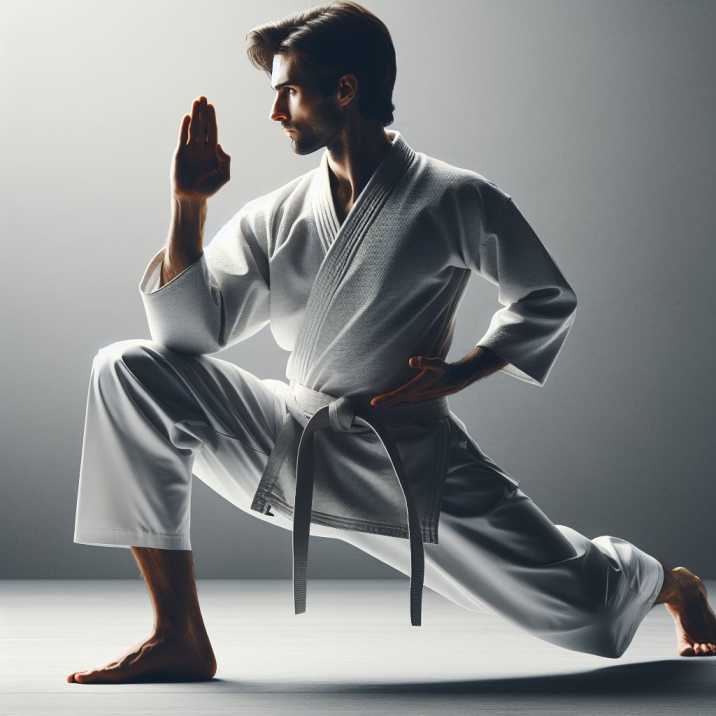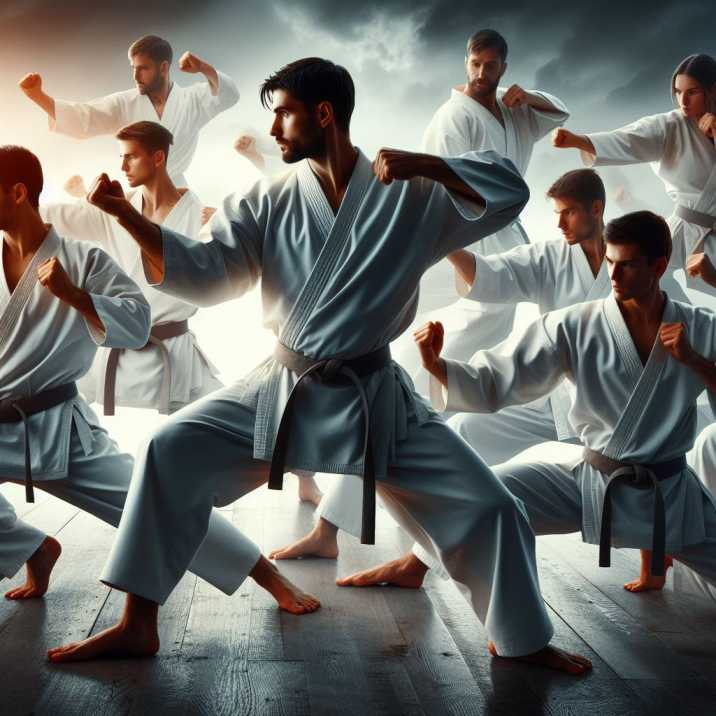Introduction:
Table of Contents
Karate, a martial art originating from Japan, has gained immense popularity worldwide for its disciplined approach to self-defense and physical fitness. Whether you’re a novice exploring the art for the first time or an experienced practitioner honing your skills, understanding the basic techniques in Karate is essential. In this guide, we’ll explore the foundational moves that form the cornerstone of Karate practice, empowering you to embark on your journey with confidence.
Key Techniques in Karate:
1. Stances:
Stances are the foundation of Karate, providing stability, balance, and power generation for various techniques in Karate. The basic stances include:
- Zenkutsu dachi (Front Stance): Emphasizing forward movement and power, this stance is characterized by a long, deep position with the front knee bent and the back leg straight.
- Kokutsu dachi (Back Stance): Offering defensive capabilities, this stance involves stepping back with one leg while keeping the other leg bent and the body weight distributed evenly.
- Kiba dachi (Horse Stance): Focusing on stability and lower body strength, this stance requires the feet to be spread wider than shoulder-width apart with the knees bent and the back straight.

2. Punches:
Punching techniques in Karate utilize the entire body to generate power and precision. The basic punches include:
- Jab (Oi-zuki): A straight punch executed with the lead hand, aimed at the opponent’s face or torso.
- Reverse Punch (Gyaku-zuki): A punch delivered with the rear hand, following a rotation of the hips and shoulders for added power.
3. Kicks:
Karate kicks are renowned for their speed, accuracy, and effectiveness. The basic kicks include:
- Front Kick (Mae Geri): A thrusting kick executed with the ball of the foot, targeting the opponent’s midsection or lower body.
- Roundhouse Kick (Mawashi Geri): A circular kick delivered with the top of the foot or the shin, striking the opponent’s body or head from the side.
4. Blocks:
Blocks are essential defensive maneuvers in Karate, used to deflect or neutralize incoming attacks. The basic blocks include:
- High Block (Jodan Uke): Used to defend against overhead strikes, this block involves raising the forearm to intercept the attack.
- Low Block (Gedan Barai): Employed against low kicks or sweeps, this block entails sweeping the arm downward to deflect the incoming strike.
5. Kata:
Kata are predefined sequences of movements that simulate combat scenarios, allowing practitioners to refine their techniques and timing. By practicing kata, students develop fluidity, precision, and mindfulness in their movements.

Table of Information:
| Technique | Description |
|---|---|
| Stances | Foundation for stability and power techniques in Karate. |
| Punches | Strikes using the fists to deliver powerful blows. |
| Kicks | Dynamic techniques using the legs for offensive and defensive purposes. |
| Blocks | Defensive maneuvers to deflect or neutralize incoming attacks. |
| Kata | Predefined sequences of movements for training and refinement. |
Conclusion:
Mastering the basic techniques in Karate lays the groundwork for progression and proficiency in this ancient martial art form. From stances to strikes, each element contributes to a well-rounded skill set that fosters discipline, respect, and physical fitness. By embracing these fundamentals and dedicating oneself to consistent practice, one can embark on a rewarding journey of self-improvement and personal growth through Karate.
Frequently Asked Questions (FAQs):
- What age is suitable to start learning Karate?
- Karate is suitable for individuals of all ages, with classes tailored to accommodate children as young as five years old to adults of any age.
- Are there different styles of Karate?
- Yes, there are various styles of Karate, each with its unique techniques, philosophies, and training methods. Some popular styles include Shotokan, Kyokushin, and Wado-Ryu.
- Do I need special equipment to practice Karate?
- While a Karate gi (uniform) is recommended for training, beginners can typically start with comfortable workout attire. As you progress, you may invest in protective gear such as gloves and shin guards for sparring.
- How long does it take to earn a black belt in Karate?
- The time taken to earn a black belt varies depending on factors such as individual dedication, training frequency, and the requirements of the specific Karate school or organization. On average, it may take several years of consistent practice.
- Is Karate only about self-defense, or does it have other benefits?
- While self-defense is a significant aspect of Karate, the practice offers numerous additional benefits, including improved physical fitness, mental focus, self-discipline, and stress relief.


